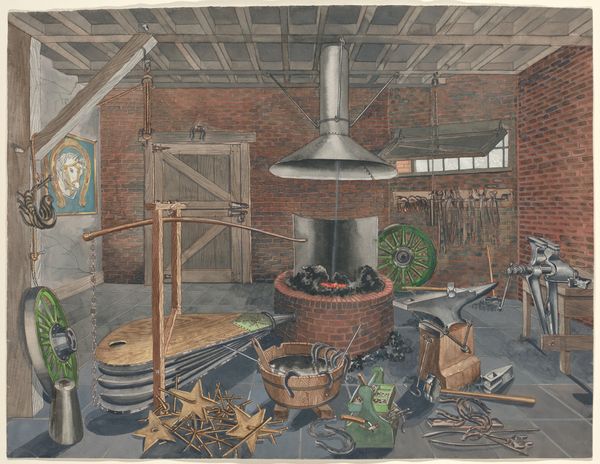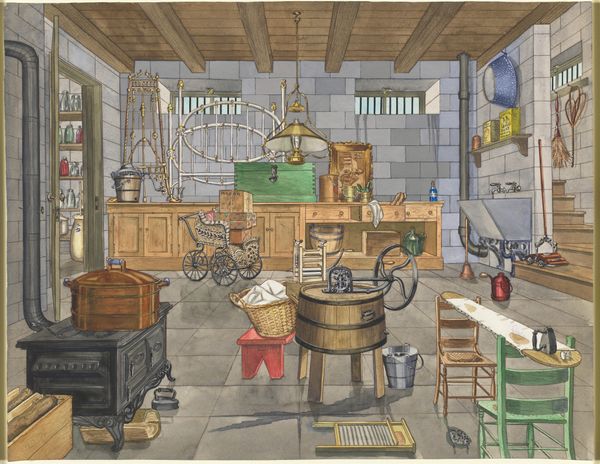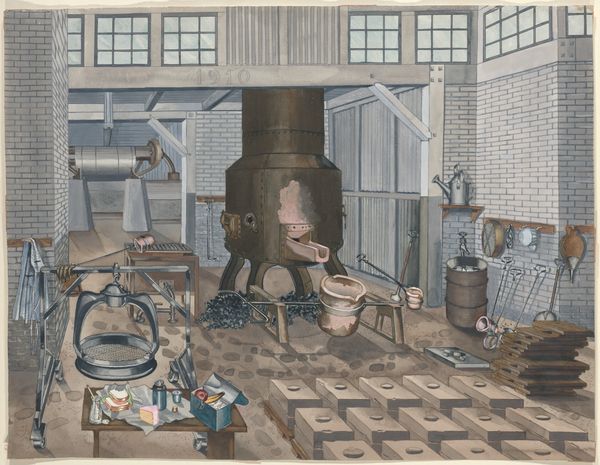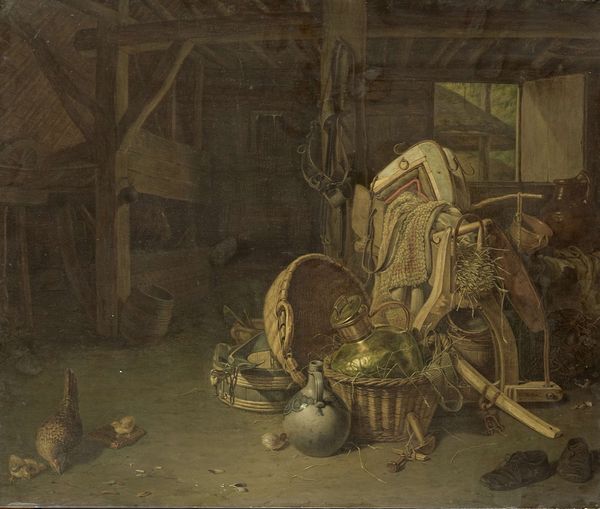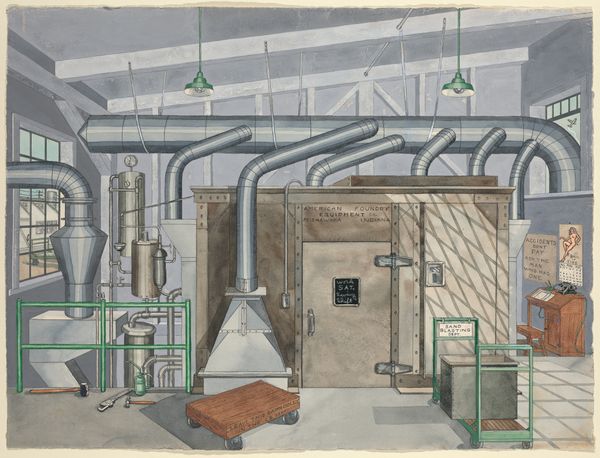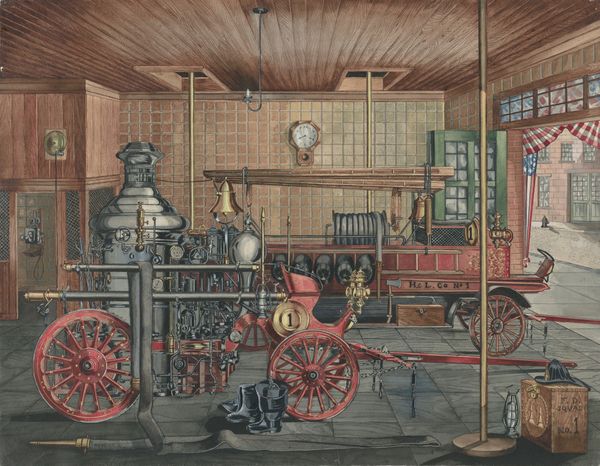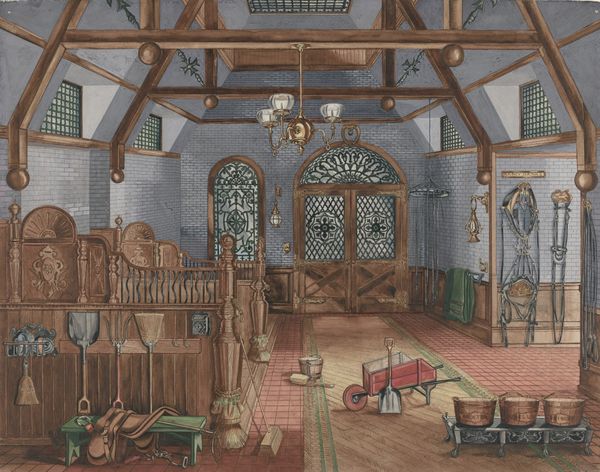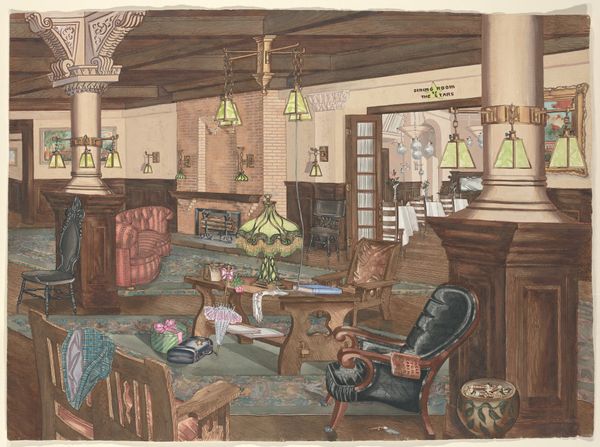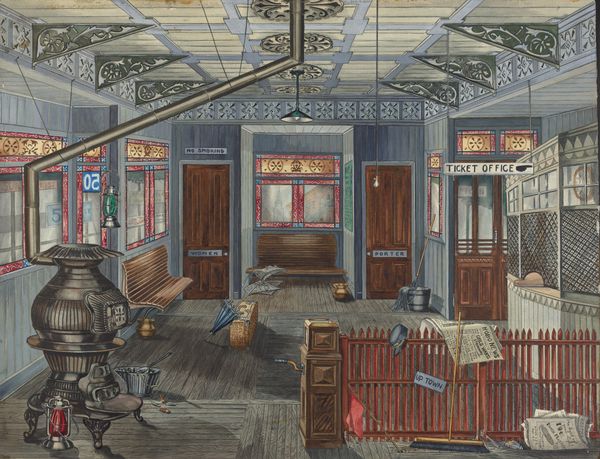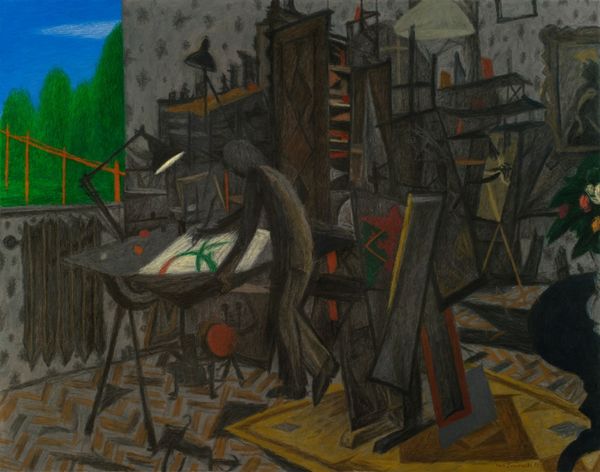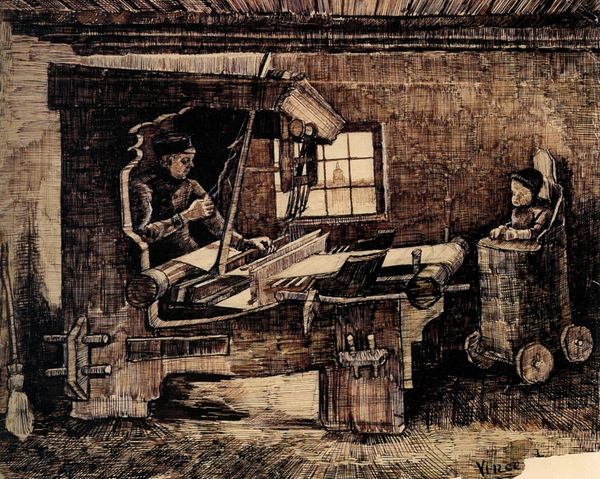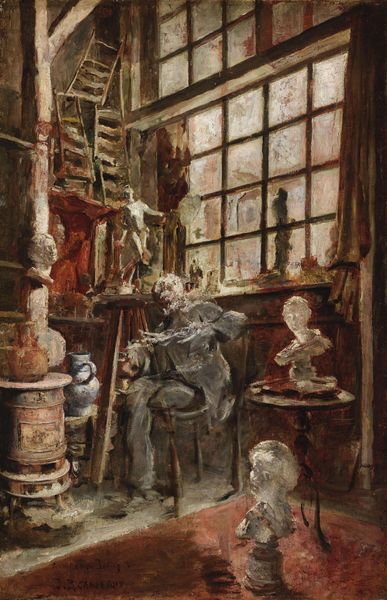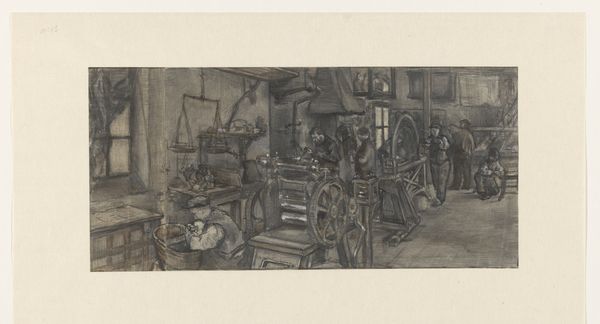
drawing
#
drawing
#
book binding
#
sketch book
#
personal sketchbook
#
sketchwork
#
coloured pencil
#
sketchbook drawing
#
watercolour illustration
#
storyboard and sketchbook work
#
sketchbook art
#
watercolor
Dimensions: overall: 56.8 x 77.5 cm (22 3/8 x 30 1/2 in.)
Copyright: National Gallery of Art: CC0 1.0
Curator: This detailed watercolor drawing is titled "Barn Gangway" and was created by Perkins Harnly sometime between 1935 and 1942. Editor: Immediately, I notice the overwhelming sense of organized chaos, like a still life exploded across a barn interior. The objects, the machines… they're rendered with an almost obsessive attention to detail, but somehow, it all feels a little… off. Curator: "Off" how? The barn, as a repository, often symbolizes a place of abundance, security, a deep connection to the land and its harvests. Is that what you're sensing? Editor: Partially, perhaps. There’s a muted color palette – mainly earth tones – contrasted with a stark and detailed machinery, resulting in visual friction, a subtle discord that's hard to ignore. The geometry is pronounced, especially in the woodwork and the machinery’s intricate lines. Curator: You're touching upon something quite profound. Consider the symbolism of the machines: The tractor represents agricultural progress, a move toward industrialization. However, the seemingly haphazard arrangement of tools – the very things that built the old ways of life – are positioned, somewhat jarringly, in the tractor's immediate orbit. Does that represent the cultural and economic upheaval caused by technology? Editor: Precisely. The artist isn't simply depicting a barn; it seems they're investigating how mechanization is encroaching on, and perhaps reshaping, traditional life. Also note the drawing's overall composition and materiality, which give a meticulous cataloguing impulse: an effort to freeze a transitional moment in time, which in and of itself is poignant. Curator: Indeed, there's a deep sense of witnessing a culture undergoing change, even loss. The details in the shadows – the ladder going nowhere, the bird’s nest – each element whispers a tale of shifting societal gears. The whole work exists at this intersection between bucolic imagery and industrial revolution, evoking memory but ultimately suggesting something will pass. Editor: Ultimately, what appears to be a simple drawing of a barn interior unfolds into an artful reflection on the complex dance between tradition and modernity, revealing a deeper meditation on change and preservation. Curator: Thank you, through that reading of materiality and image-structure we now understand this drawing as a complex layering of cultural commentary, history and nostalgia.
Comments
No comments
Be the first to comment and join the conversation on the ultimate creative platform.
